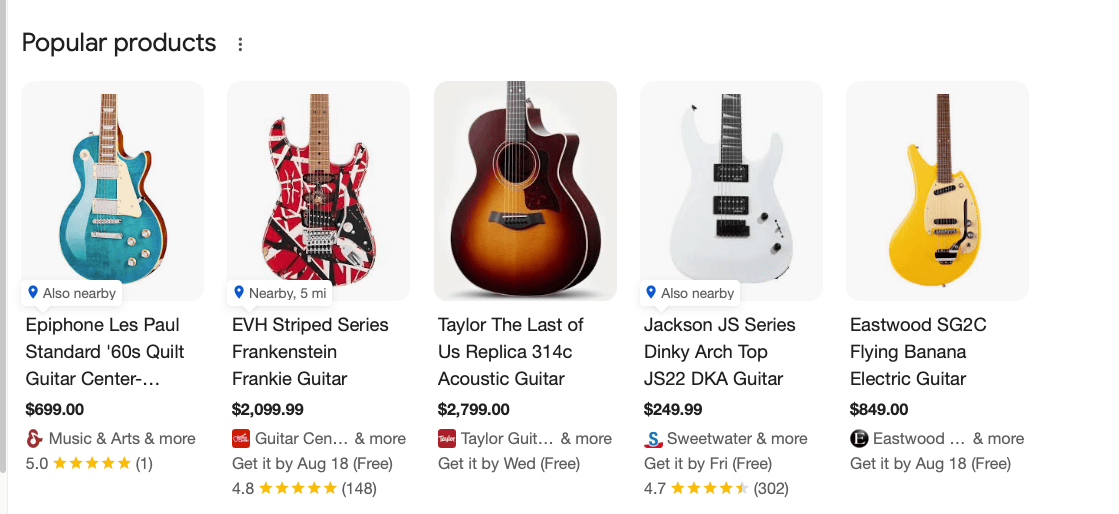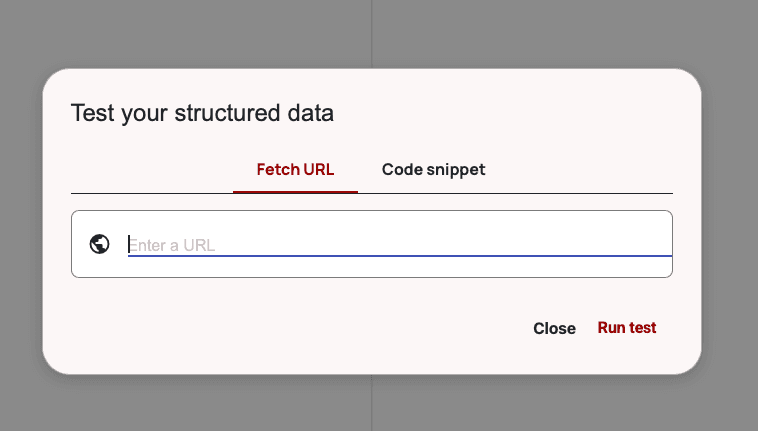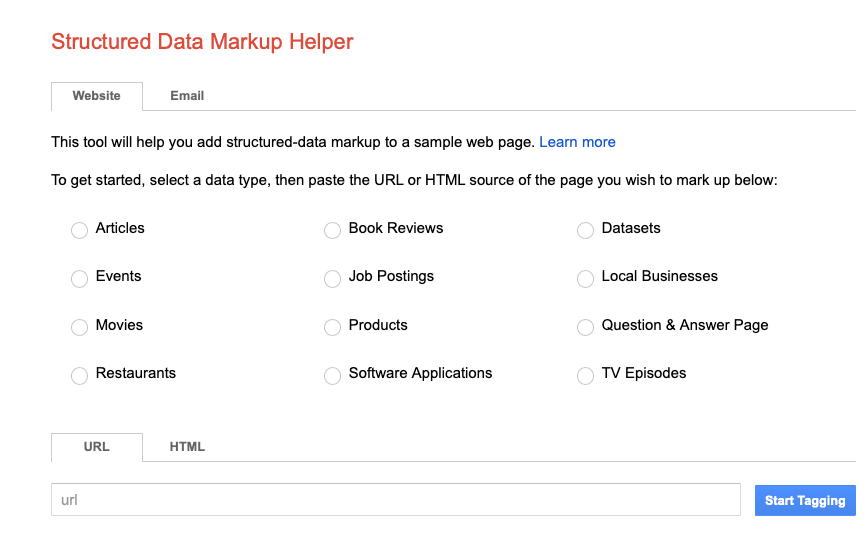
- Special features added to your ‘blue link’ results (like recipes and reviews)
- Featured Snippets (quick answers and definitions alongside a link to your content)
- Top News Stories carousel
- Google Maps results (Local Pack)
- Voice search (Alexa and Siri)
 Including it will qualify you for all sorts of visibility-enhancing features, and you’ll be more likely to appear in AI Overviews, summaries, and citations.
Keep reading to learn how to properly use structured data to improve your SEO for both AI and classic search!
Including it will qualify you for all sorts of visibility-enhancing features, and you’ll be more likely to appear in AI Overviews, summaries, and citations.
Keep reading to learn how to properly use structured data to improve your SEO for both AI and classic search!
What is Structured Data? And Why Do Google and LLMs Love It?
 Let’s kick things off with some clear definitions.
When we say structured data, we’re simply talking about data that has a standardized format.
In other words, data follows a rigid structure so that it’s easy to identify (and accessible by both humans and machines).
Schema markup is a form of structured data that’s used by virtually all major websites and platforms online (45 million domains use it).
It’s a standardized format for labeling aspects of your content.
For example, there are schemas for reviews, product listings, author biographies, and recipes, just to name a few.
Let’s kick things off with some clear definitions.
When we say structured data, we’re simply talking about data that has a standardized format.
In other words, data follows a rigid structure so that it’s easy to identify (and accessible by both humans and machines).
Schema markup is a form of structured data that’s used by virtually all major websites and platforms online (45 million domains use it).
It’s a standardized format for labeling aspects of your content.
For example, there are schemas for reviews, product listings, author biographies, and recipes, just to name a few.
 Semantic HTML is another form of structured data that’s common online, and it works hand-in-hand with schema markup. For an HTML element to be considered ‘semantic,’ it has to clearly define its content.
<header>, <table>, and <article> are all semantic HTML elements because they describe what they contain (i.e., an article heading, a data table, and an online article).
Generic elements like <div> and <span> are non-semantic because they do not describe what they contain.
This brings us to why LLMs and search algorithms prefer schema markup and structured HTML, because it makes content much easier for them to understand.
To picture what parsing a website that contains no structured data is like, imagine trying to read a book that doesn’t label its foreword, prologue, chapters, dialogue, and epilogue.
Semantic HTML is another form of structured data that’s common online, and it works hand-in-hand with schema markup. For an HTML element to be considered ‘semantic,’ it has to clearly define its content.
<header>, <table>, and <article> are all semantic HTML elements because they describe what they contain (i.e., an article heading, a data table, and an online article).
Generic elements like <div> and <span> are non-semantic because they do not describe what they contain.
This brings us to why LLMs and search algorithms prefer schema markup and structured HTML, because it makes content much easier for them to understand.
To picture what parsing a website that contains no structured data is like, imagine trying to read a book that doesn’t label its foreword, prologue, chapters, dialogue, and epilogue.
 Sure, you can still read it, but you’ll have to guess as to what’s what, like when certain chapters begin and end.
This is what it’s like for LLMs and algorithms to parse a website with no schema markup or semantic HTML.
On the flip side, parsing a site that properly uses structured data is like reading a book with clear labels.
You know exactly when a character is speaking, when chapters end, and when the epilogue begins.
TL;DR?
For LLMs and algorithms, structured data vs. no structured data is like the difference between guessing (no labels, so AI tools have to make assumptions) and knowing (including structured data that clearly labels everything).
Sure, you can still read it, but you’ll have to guess as to what’s what, like when certain chapters begin and end.
This is what it’s like for LLMs and algorithms to parse a website with no schema markup or semantic HTML.
On the flip side, parsing a site that properly uses structured data is like reading a book with clear labels.
You know exactly when a character is speaking, when chapters end, and when the epilogue begins.
TL;DR?
For LLMs and algorithms, structured data vs. no structured data is like the difference between guessing (no labels, so AI tools have to make assumptions) and knowing (including structured data that clearly labels everything).
Examples of Structured Data That Drive Visibility
Now that you know what structured data is, it’s time to learn how it drives online visibility. In particular, we’ll examine the types of structured data (namely, schemas) that are most important for SEO and AI-powered search.Product page schemas
Your product pages are revenue drivers, so it’s crucial to provide detailed schema markup for them. This ensures that LLMs and search algorithms won’t have to guess about things like product names, prices, and specifications. Essentially, you want to leave nothing to the (mechanical) imagination when it comes to information about your products. The more detailed and clear your schemas are, the more likely LLMs are to cite your content and products to their users. Detailed schema markup also improves traditional SEO, so you’ll have the added benefit of appearing in things like product carousels on Google: The product page schemas that matter most are:
The product page schemas that matter most are:
Product
This is the primary schema for all product and e-commerce listings. Make sure you fill out the following fields with accurate information:- name
- description
- image
- sku (Stock Keeping Unit)
- brand
- offers
- gtin (Global Trade Item Number)
- mpn (Manufacturer Part Number)
Offer
This schema is typically nested inside the Product schema, and it’s extremely important for your product’s pricing and availability. That’s because if a user asks an AI search tool about a product’s price or stock quantity, instead of parsing text on a product page, LLMs will typically pull from the Offer schema instead. Here are the fields you should prioritize:- price
- priceCurrency
- availability
- url
AggregateRating & Review
These schemas are for your customer reviews, which are extremely important trust signals to LLMs and algorithms. Key fields for the AggregateRating schema include:- ratingValue
- reviewCount
- bestRating & worstRating
- author
- reviewBody
- reviewRating
Breadcrumblist
All this schema does is define the breadcrumb path to your product pages (like Home > All Products > Guitars), but you should still include it if your site uses breadcrumbs. Doing so lets LLMs understand where individual products lie in your category hierarchy, which can impact how your products are recommended alongside competitors.ImageObject
While the Product schema contains an image field, the ImageObject schema lets you include high-resolution metadata. The fields you should focus on here are:- url
- width & height
- caption
Article and FAQPage schemas
Structured data also matters for content appearing at the top and middle of your sales funnel. That means you need to include schemas for your informative blog posts, FAQ pages, and news articles. The most important fields for the Article schema include:- headline (should match your H1)
- description
- author/publisher (essential for building trust and authority, tie it to the Organization schema)
- datePublished/dateModified
- mainEntityofPage
- image
- Make sure each question is standalone.
- Ensure all your acceptedAnswer fields are as concise as possible. No fluff here!
- Match the schema answers with your visible HTML.
Local business schemas
Lastly, there are some schemas you should include if your business has a local presence, such as:- LocalBusiness (include specific subtype like Restaurant or Store)
- aggregateRating (your reviews play a huge role in local SEO)
Practical Ways to Add Schema to Your Site
Knowing which schemas to use and actually adding them to your site are two different things. The good news is that there are plenty of online tools (some of them free) that will make adding schema markup to your site as easy as pie. From our experience, these are the best structured data tools to use:- Google Tag Manager. This tool lets you inject schema markup without editing your website’s code, which is a huge help.

- Schema.org documentation and Validator. The official schema website contains all the documentation you need to add markup manually, and you can test the results with its Validation tool.

- YoastSEO. Yoast will auto-generate schema markup for posts, pages, breadcrumbs, and other types of content, which saves a ton of time.

- Google’s Structured Data Markup Helper. Another offering from Google, this tool is perfect for generating schema types in JSON-LD.
 Remember to test all your markup before calling it a day. Errors happen all the time, and there’s no point in adding structured data if LLMs and algorithms can’t properly interpret it.
Remember to test all your markup before calling it a day. Errors happen all the time, and there’s no point in adding structured data if LLMs and algorithms can’t properly interpret it.
Final Takeaways: Structured Data for SEO and AI Search
Put simply, structured data is an absolute necessity for any SEO strategy in the modern era. Whether you’re targeting classic search engines or LLM-powered search, both use semantic HTML and schema markup to quickly and confidently understand online content. Are you not sure if your structured data is fully optimized? Don’t wait to sign up for one of our Technical Audits to learn how to improve your schema markup, loading speed, and dozens of other important technical SEO factors!The author
Rachel Hernandez
description
Discussion
Comments
Anju
October 2nd, 2025
Really grateful article
Digital Triumphs
September 11th, 2025
Really insightful!
Mohammed Ashmal
September 7th, 2025
Really insightful! Schema markup often feels underrated, but it’s like a hidden lever in SEO. Such a small tweak, yet it can drastically improve how search engines understand and showcase your content. Appreciate you breaking it down so clearly!”
